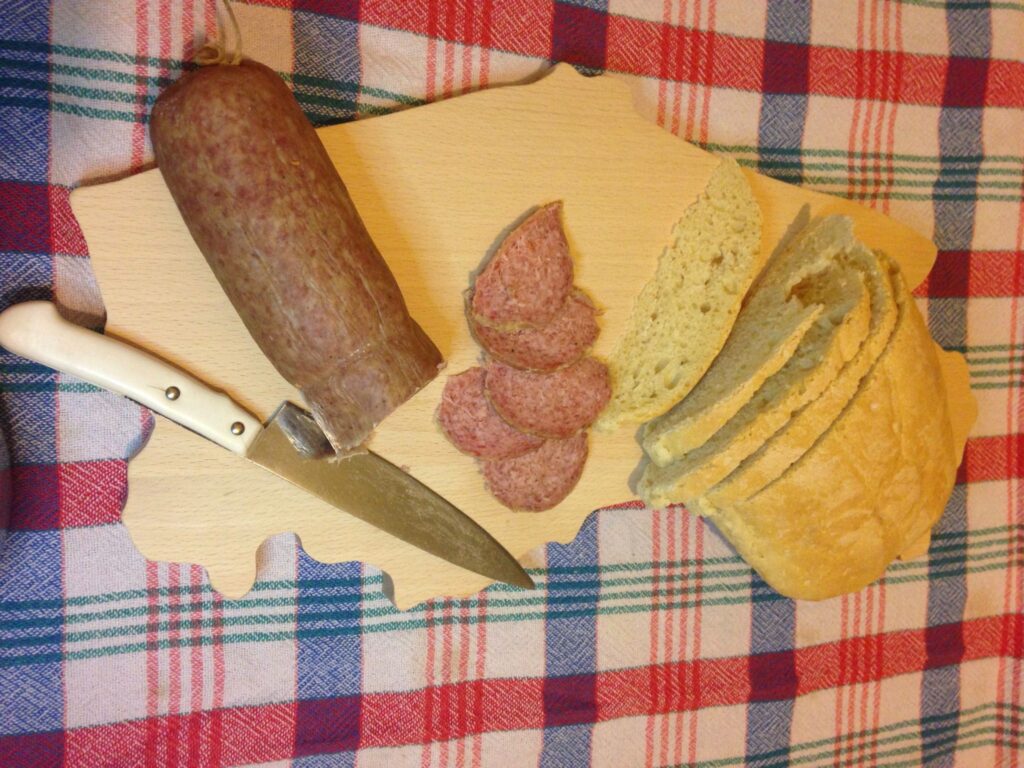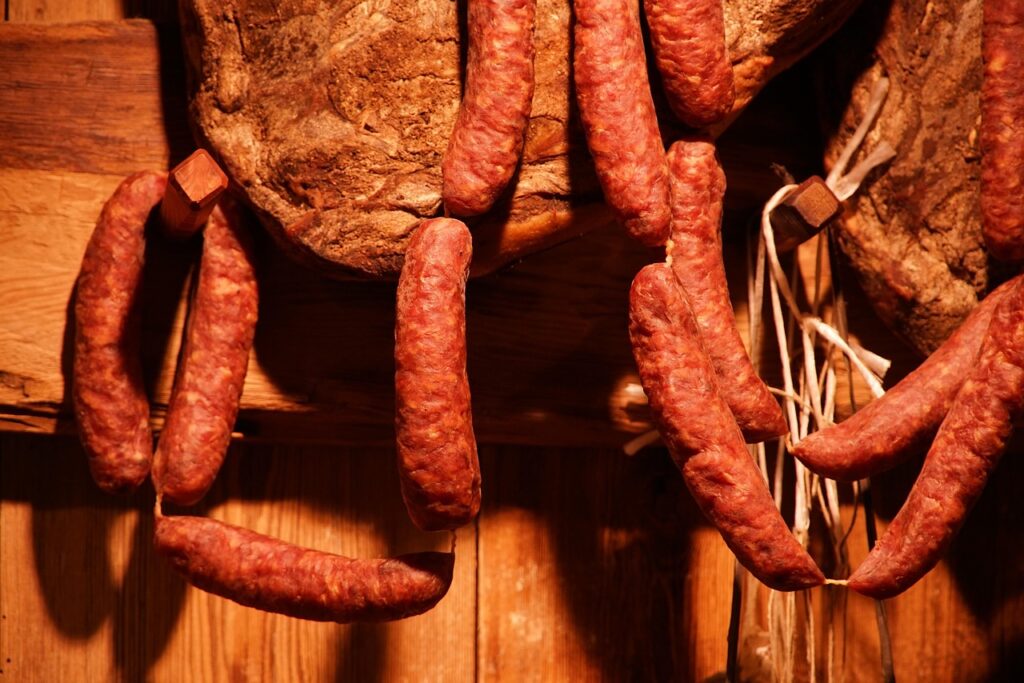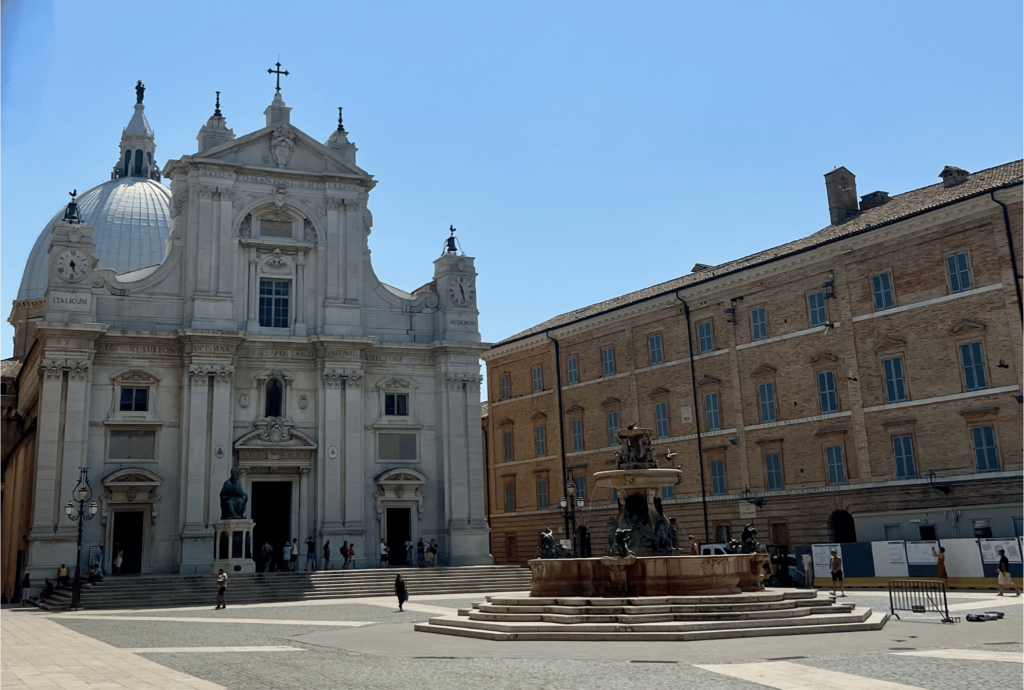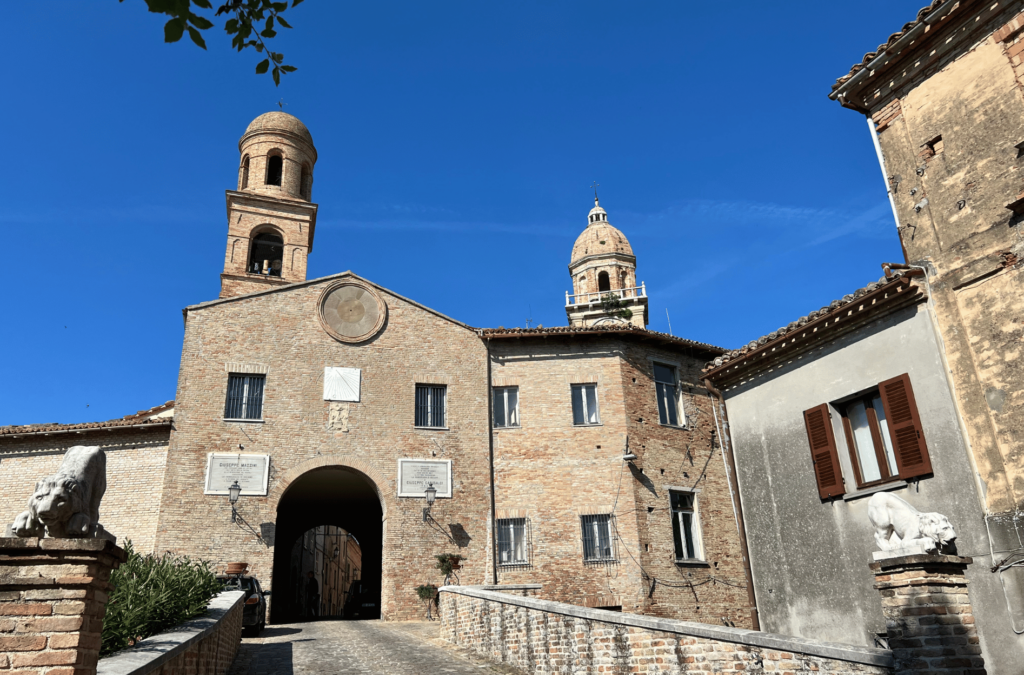Certain that we can propose viable alternatives for our vegetarian or vegan friends, we must point out that thinking about the traditions of the very rich cuisine of the Marche region cannot do without quality sausages and in particular ciauscolo. If you don’t know it yet, you can’t not taste it! Not only because of its taste but also because of what it represents in regional culinary history.
Let it be known: Marche’s typical meat-based appetizer is cold and can be composed of a wide variety of local cured meats and cheeses such as the Fabriano salami, salamini alla cacciatora, the loin, the lonzino, the Carpegna ham, the ciarimbolo, the marchigiana cup, the mazzafegato, the galantine, migliaccio, sheep salami, liver sausage, casecc, fossa cheese, Marche pecorino, pecorino in cask, raviggiolo, and casciotta d’Urbino. Among them all, he stands out: a soft, fresh spreadable salami whose history is directly related to rural tradition, rural life .
In fact, farmers used all parts of the pig and nothing was wasted. Pork was slaughtered in winter both because of the greater scarcity of fresh food and the greater ease of storage in an age without refrigerators. The farmer’s habit of not wasting anything caused them to look for ways to take advantage of all the lard (the fatty part) of the animal, and thus ciauscolo was born. In the preparation, lard is minced, 2 or 3 times, along with the noble parts of the pig and salt, black pepper, garlic and wine, giving the mixture a smooth and creamy consistency that can be spread on bread, for a truly amazing end result!
The mince, bagged and tied with hemp twine, is then hung from hooks on the ceiling and left to season for at least 15 days for it to partially dry. At the end of the ripening period it was stored (always hung) in the cellar in colder temperatures, to accompany the family throughout the course of the year, until the next “runway.”
One theory says that the term “ciauscolo” means “small food” because it is eaten as an appetizer or in snacks and snacks during field work, for a good dose of much-needed energy back in the day.
Curiosity about ciauscolo
- In 2006 it was recognized as a PGI product, indicating that it can only be produced in the Marche region, limited to the provinces of Macerata and parts of those of Ancona, Fermo and Ascoli Piceno.
- In the town of Moresco (Fermo), the Ciauscolo Festival is held on the first weekend of September with stands of various producers offering various ciauscolo preparations and other amenities and activities for visitors.
- The first time ciauscolo officially appears in a document is in 1696, in a price list in Belforte del Chienti in the province of Macerata (document preserved in the State Archives of Macerata)
- Ciauscolo is used in many regional dishes, also revisited with innovation: young masterchef Simone Scipioni, for example, recently revolutionized the classic Ascoli olives, presenting them stuffed with ciauscolo and gazpacho
- A small company from Montegiorgio is bringing a “Big Ciauscolo” to Milan’s international Tutto Food fair, producing a ciauscolo that follows traditional preparation but is large in size.




